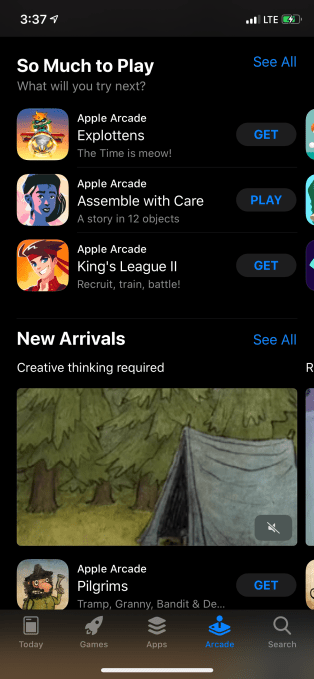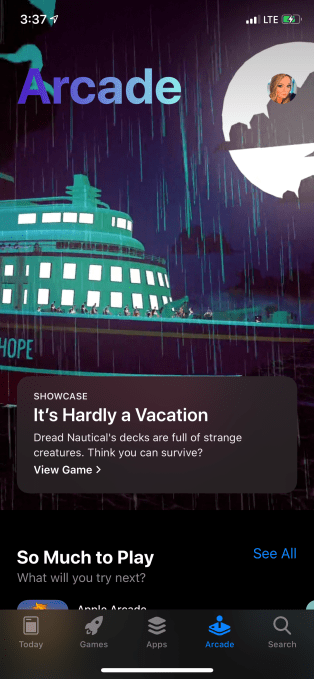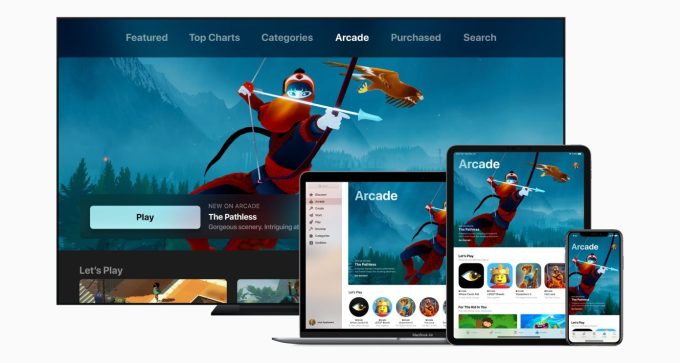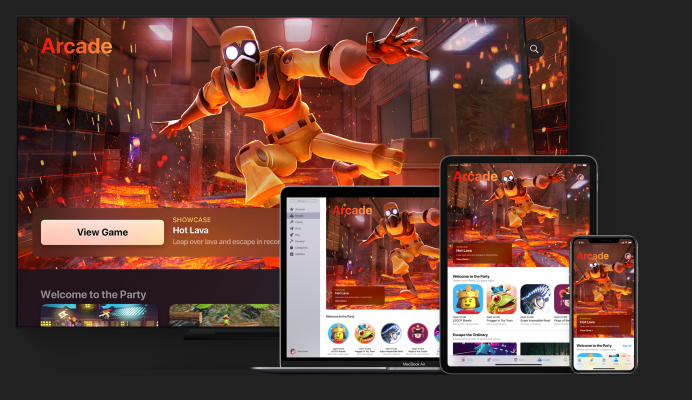Apple Arcade is a new kind of App Store. One where eclectic, indie and original content can shine. A place where gamers can play without being hounded by ads or strong-armed into spending on in-app purchases. But unlike the original App Store, Apple Arcade’s marketplace is a black box. There’s no way for consumers or developers to find out if Arcade produces a breakout hit game or even which app everyone is playing right now.
That’s because Apple Arcade has ditched one of the App Store’s core components: the Top Charts.
Traditionally, the App Store’s Top Charts highlighted which games are most popular, based on downloads, velocity, and other signals Apple never disclosed. On the main App Store, users can browse these top-ranked apps and games, including both free and paid titles. And through APIs, app store intelligence firms like App Annie, Sensor Tower, and others gain access to even more data — like top grossing apps and games, for example.
However, following the Apple Arcade subscription service’s launch, these firms told TechCrunch that Apple is not exposing any of the data that providers such as themselves have typically had access to in order to generate download and revenue estimates. There is some expectation that could change in time, but it’s not clear if or when that will be.
For consumers who subscribe to Arcade, the lack of Top Charts means there’s no quick way to see which games are hitting big. They won’t be able to see if a game’s popularity grows or wanes over time, as its chart position rises and falls. They won’t be able to view a shortlist of the top games everyone is playing.

Instead, the discoverability of new titles, for now, is limited to Apple’s editorial curation of Arcade’s lineup. On the Arcade homepage, a showcase title is given a prominent position at the top, and this is followed by various editorial collections. The first, “So Much to Play,” doesn’t even have a theme. It’s just some sort of round-up of recommendations.
There’s also a section of “New Arrivals,” one with highlighted exclusives (“Only on Arcade”), and a place to browse by category. A “Games for You” section purports to be a place for personalized recommendations, but doesn’t immediately refresh after you install its suggestions. [Shortly after publication, Arcade was updated with more games and additional editorial collections.]
None of this is all that helpful in understanding what’s popular on Arcade, and perhaps that’s by design.
After all, there is some value in letting users decide for themselves what it is they want to play, rather than being led to it through crowdsourcing. A similar trend to move away from popularity metrics is being seen across social media apps, with Instagram and Facebook hiding “Like” counts, for example.

But as Arcade grows over time, manually scouring for the best of the best could become more challenging. There’s only so much time in the day to even play mobile games — at some point, it seems it would be worth seeing which ones have truly achieved “can’t miss” status by peeking at the rankings.
That’s not to say that Apple has ruled out including a Top Charts section in Arcade. It’s just that it’s early days for a subscription-based product like this, and the team honestly isn’t sure if this new model requires a different approach. Instead, the company is taking more of a wait-and-see approach and plans to take in both user and developer feedback to grow and improve the Arcade product over time.
Apple may very come up with a better way of showcasing the most loved and most played Arcade games than Top Charts, but that shouldn’t stop it from providing something like the Top Charts in a programmatic fashion to those who require it, as it does today with its Top Grossing charts. As you may recall, Apple pulled the Top Grossing charts from the App Store with the store’s 2017 redesign, but has continued to make that data available as a feed to data providers. It could do the same for Arcade.

App Store developers, of course, have their own apps’ data through Connect, but will be lacking the broader context. They won’t know what sort of Arcade games subscribers are favoring, versus what may be flopping. They won’t know if they’ve launched an Arcade hit, or if their games are performing better or worse than others in their same category.
Perhaps in the near-term, that context doesn’t matter, with Apple funding the games’ development and doling out perks for their exclusivity. This takes the pressure off of the monetization side of things for the app makers. But ultimately, game development is a business, even at the indie scale. And the learnings from Arcade can apply to a developer’s broader efforts in game creation across the wider App Store and beyond.
